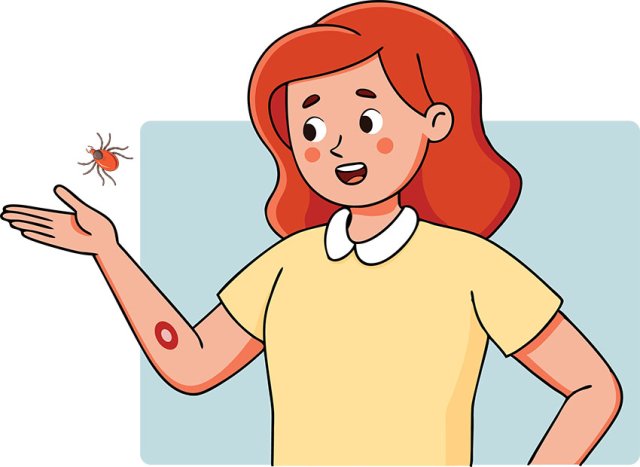How to Safely Remove a Tick: A Step-by-Step Guide
How to Safely Remove a Tick: A Step-by-Step Guide

🧲 How to Safely Remove a Tick: A Step-by-Step Guide for Kids and Families
Introduction
Whether a tick is found on a person, a dog, or another pet, one of the most important things you can do is remove it quickly and safely. Ticks can carry harmful germs like bacteria and viruses that cause diseases such as Lyme disease, Rocky Mountain Spotted Fever, and Ehrlichiosis. These germs are usually not passed on right away. In fact, most ticks need to be attached for at least 24 hours before they spread illness. That means early removal makes a big difference.
It’s normal to feel nervous when you see a tick, but there’s no need to panic. With the right tools and steps, tick removal is safe, simple, and something anyone can learn to do.
Why Tick Removal Matters
When a tick bites, it inserts tiny mouthparts into the skin to feed on blood. If a tick is carrying disease-causing germs, those germs may be in its saliva and can enter the bloodstream during feeding. Removing the tick as soon as possible helps lower the risk of getting sick.
It’s also important to remove the entire tick, including the head and mouthparts. Leaving parts behind may irritate the skin or lead to infection. That’s why knowing how to remove a tick properly is so important.
Tools You’ll Need
You don’t need a lot of equipment to remove a tick—just the right kind. Here are the basic tools recommended by doctors and veterinarians:
- Fine-tipped tweezers (not regular tweezers used for hair)
- Tick removal tool (optional, but helpful for pet owners)
- Rubbing alcohol or antiseptic
- Soap and water
- A small jar, plastic bag, or tape (if you want to save the tick for identification)
How to Remove a Tick: Step-by-Step
Here’s how to remove a tick safely from skin—whether it’s on a human or a pet.
- Stay calm. Get your tools ready before you start.
- Grasp the tick as close to the skin as possible using fine-tipped tweezers. Don’t grab the tick by its body—this can squeeze germs into the skin.
- Pull upward slowly and steadily. Don’t twist, jerk, or yank the tick. This can cause the mouthparts to break off and stay behind.
- If parts of the tick break off, try to remove them gently with clean tweezers.
- Once the tick is removed, clean the bite area and your hands with rubbing alcohol, antiseptic, or soap and water.
Place the tick in a plastic bag or jar if you want to show it to a doctor or vet later. You can also tape it to a piece of paper and write down the date and where it was found.
Never try to remove a tick with:
- Your fingers
- A hot match or lighter
- Nail polish or petroleum jelly
- These methods are not safe and don’t work.
What to Do After Removing the Tick
After removal, it’s a good idea to watch for any signs of illness. This includes fever, rash, tiredness, or soreness near the bite area. In dogs, signs may include limping, loss of appetite, or unusual tiredness.
If the person or pet develops symptoms within a few weeks of the tick bite, see a doctor or veterinarian right away. Let them know about the tick and where the bite happened. If you saved the tick, bring it along—it may help identify the type of tick and the risk of disease.
|
Kid-Friendly SummaryRemoving a tick is important and not as scary as it seems. If you find one on yourself, a friend, or a pet, stay calm and get help from an adult. Use fine tweezers to grab the tick close to the skin, then pull it out slowly. Don’t twist or squish it. Afterward, clean the bite area and keep an eye out for signs of illness. The sooner a tick is removed, the safer everyone will be. |
Vocabulary Words
Tick – A small bug that bites and feeds on blood
Tweezers – A small tool used to grip tiny things like splinters or ticks
Infection – When germs cause sickness in the body
Antiseptic – A substance used to clean wounds and kill germs
Rash – A skin reaction that may be red, itchy, or bumpy
Mouthparts – The parts of a tick’s body that attach to the skin
Upward pull – A slow, straight motion used to safely remove a tick
Learning Resources
| Printable | Handout | Learn and do | Testing Resources |
|
|
|
|
|
Additional Educational Resources
Tick Clipart - Images - Pictures






















































